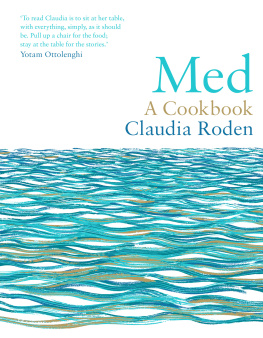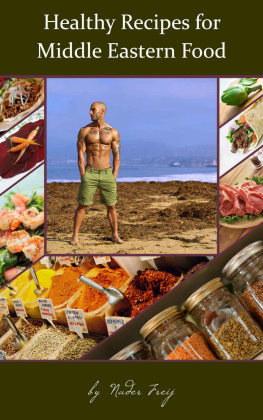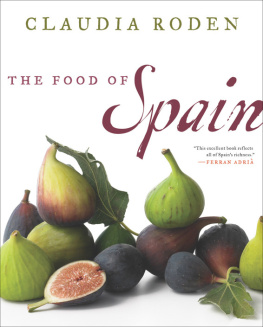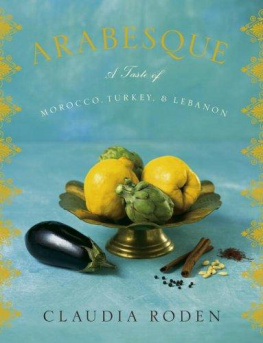Roden - The new book of Middle Eastern food
Here you can read online Roden - The new book of Middle Eastern food full text of the book (entire story) in english for free. Download pdf and epub, get meaning, cover and reviews about this ebook. City: New York, year: 2008, publisher: Alfred A. Knopf, genre: Home and family. Description of the work, (preface) as well as reviews are available. Best literature library LitArk.com created for fans of good reading and offers a wide selection of genres:
Romance novel
Science fiction
Adventure
Detective
Science
History
Home and family
Prose
Art
Politics
Computer
Non-fiction
Religion
Business
Children
Humor
Choose a favorite category and find really read worthwhile books. Enjoy immersion in the world of imagination, feel the emotions of the characters or learn something new for yourself, make an fascinating discovery.
- Book:The new book of Middle Eastern food
- Author:
- Publisher:Alfred A. Knopf
- Genre:
- Year:2008
- City:New York
- Rating:3 / 5
- Favourites:Add to favourites
- Your mark:
The new book of Middle Eastern food: summary, description and annotation
We offer to read an annotation, description, summary or preface (depends on what the author of the book "The new book of Middle Eastern food" wrote himself). If you haven't found the necessary information about the book — write in the comments, we will try to find it.
Abstract: On this Updated and Greatly Enlarged Edition of her Book of Middle Eastern Food, Claudia Roden re-creates a classic. The book was originally published here in 1972 and was hailed by James Beard as a landmark in the field of cookery; this new version represents the accumulation of the authors thirty years of further extensive travel throughout the ever-changing landscape of the Middle East, gathering recipes and stories. Now Ms. Roden gives us more than 800 recipes, including the aromatic variations that accent a dish and define the country of origin: fried garlic and cumin and coriander from Egypt, cinnamon and allspice from Turkey, sumac and tamarind from Syria and Lebanon, pomegranate syrup from Iran, preserved lemon and harissa from North Africa. She has worked out simpler approaches to traditional dishes, using healthier ingredients and time-saving methods without ever sacrificing any of the extraordinary flavor, freshness, and texture that distinguish the cooking of this part of the world. Throughout these pages she draws on all four of the regions major cooking styles. From the tantalizing mezze-those succulent bites of filled fillo crescents and cigars, chopped salads, and stuffed morsels, as well as tahina, chickpeas, and eggplant in their many guises-to the skewered meats and savory stews and hearty grain and vegetable dishes, here is a rich array of the cooking that Americans embrace today. No longer considered exotic-all the essential ingredients are now available in supermarkets, and the more rare can be obtained through mail order sources (readily available on the Internet)-the foods of the Middle East are a boon to the home cook looking for healthy, inexpensive, flavorful, and wonderfully satisfying dishes, both for everyday eating and for special occasions. Claudia Rodens seminal book on Middle Eastern cooking, which James Beard called a landmark in the field of cookery when it was first published in 1972, is made new-with additional recipes, extensive variations, & new techniques, the fruit of 30 years of travel & research. There are now more than 800 recipes (including variations) from Morocco & Tunisia, Turkey & Greece, Lebanon, Syria, Egypt, Persia, & other Middle Eastern countries. They represent the best of the Middle East, & they stress simple dishes, healthful ingredients, & time-saving methods, with no sacrifice of extraordinary variety or delectable flavor. Richly infused with Rodens own memories of growing up in Egypt & with stories of her travels, the book is an excursion not merely into the cuisine of the region but into its culture as well. It is a book that both preserves the past & is alive with the present: a masterpiece made even more masterly-the quintessential Middle Eastern cookbook. The refined haute cuisine of Iran, based on rice exquisitely prepared and embellished with a range of meats, vegetables, fruits, and nuts-Arab cooking from Syria, Lebanon, and Jordan-at its finest today, and a good source for vegetable and bulgur wheat dishes-The legendary Turkish cuisine, with its kebabs, wheat and rice dishes, yogurt salads, savory pies, and syrupy pastries-North African cooking, particularly the splendid fare of Morocco, with its heady mix of hot and sweet, orchestrated to perfection in its couscous dishes and tagines
Roden: author's other books
Who wrote The new book of Middle Eastern food? Find out the surname, the name of the author of the book and a list of all author's works by series.

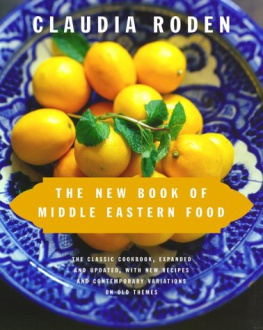

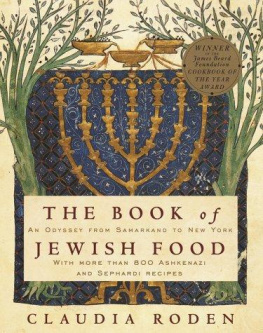

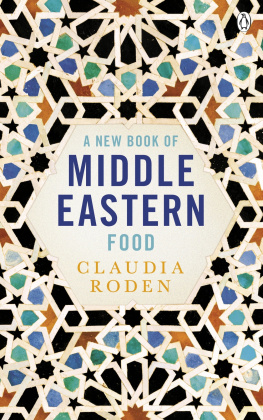

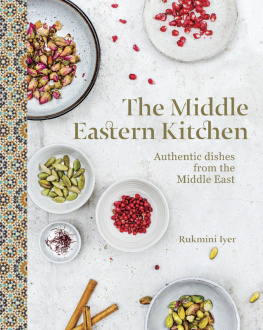

![Claudia Roden - Claudia Rodens Mediterranean: Treasured Recipes from a Lifetime of Travel [A Cookbook]](/uploads/posts/book/289768/thumbs/claudia-roden-claudia-roden-s-mediterranean.jpg)
